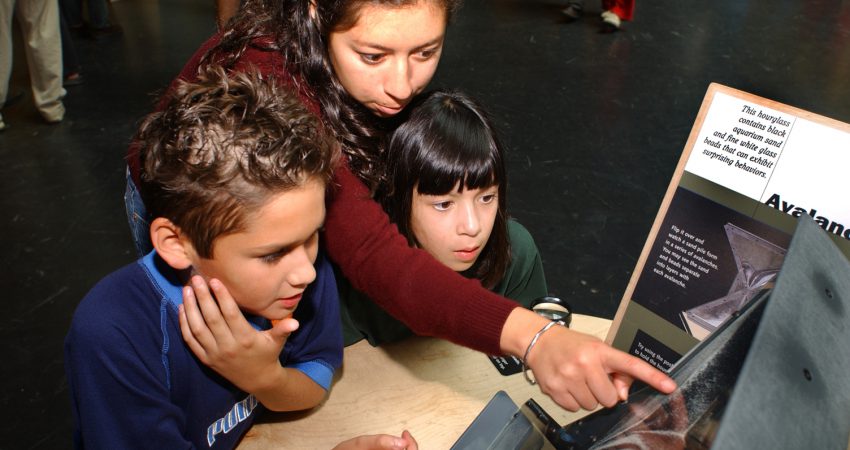
By Elaine Regan - May 2011
PAPER CITATION
DeWitt, J., & Osborne, J. (2010). Recollections of exhibits: Stimulated-recall interviews with primary school children about science centre visits. International Journal of Science Education, 32(10), 1365–1388.
WHY IT MATTERS TO YOU
This study found that visitor interactions with exhibits can have a memorable impact and can support deeper engagement with science concepts through reflection after the visit.
What Is The Issue?
This study utilized digital media in the form of still photographs and video-clips of students’ visits to a science centre to stimulate recall of the visit and to explore the extent to which students were cognitively engaged, specifically looking at the meaning they constructed. Students were asked what was happening in the clip or photo, how the exhibit “worked” what they thought the exhibit was trying to show them, and whether or not they enjoyed the exhibit. The study found that the visits to science centres were highly memorable experiences for students and that students were highly engaged as they attempted to (mostly unsuccessfully) extract properties or characteristics of exhibits, make causal explanations, and utilize prior knowledge.
Practitioners and researchers in science centres are concerned with how visitors make sense of their experiences, the meaning constructed from their interactions with exhibits, and how these may change over time. Research has shown that visitor interactions with exhibits can have a memorable impact and can be recalled and articulated from their memories even up to six months after the visit (both cognitive and affective aspects).
What Was The Study?
This study investigated students’ explanations and interpretations of particular exhibits and the extent to which they drew on or elaborated concepts in the process. The study involved 63 post-visit interviews with 129 upper primary school pupils (ages 9–11). Students reported that they valued visits/exhibits that were fun, interesting, novel, permitted “hands-on” manipulation and the opportunity to learn.
What Were The Findings?
Students spoke frequently about what was observed in the exhibit, particularly what they did or what it looked like. However, such descriptions went beyond what was observable in the photo or video and thus showed that students could recall a sequence of events, going beyond a simple description of its elements. The students displayed a willingness to construct models of physical systems through their efforts to extract the underlying principles and properties displayed in the exhibits and the causal explanations offered for what they saw (though these were mostly scientifically incorrect).
In this study, students discussed facts/properties/processes less often than they provided descriptions of what was happening; though some students related what they saw to their existing understanding of science. The resulting articulation of concepts afforded by this type of reflection may be especially important for field trips designed to support students' development of science concepts.
The research also highlights the importance of utilizing conceptual frameworks familiar to students from their school and everyday experience to help them develop from their visits. It shows that the interactions students have during science centre visits can support opportunities for deeper engagement with science concepts and processes during reflection after the visit, even after considerable delay.
The findings also show that digital media is a powerful tool for students to revisit their experience. The authors suggest extending the learning potential of science centre visits by making video-clips of exhibits available on their websites as an educational resource for teachers, dissolving the boundary between formal and informal contexts.




